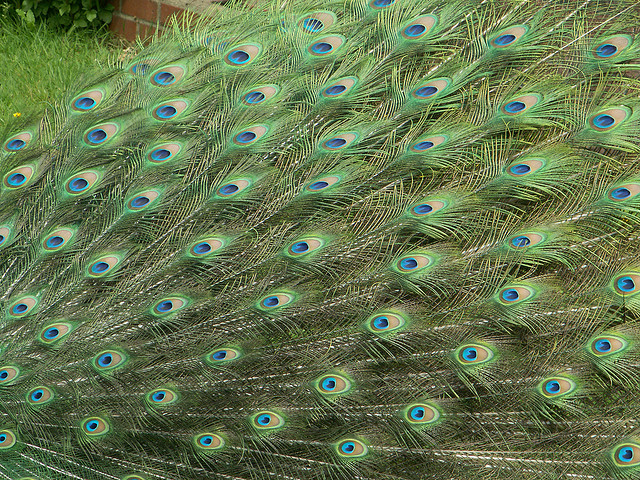FWP:
SETS
DESERT: {3,1}
SPRINGTIME: {13,2}
For background see S. R. Faruqi's choices. For more on Ghalib's unpublished verses, see the discussion in {4,8x}.
Why in fact would the net 'become' a peacock? Why, that's easy: 'through the ebullience of the magic/trickery of the spring/flourishingness of the extent/presentation that is desert-given', of course, why else? This kind of thing can only be called annoying. Four iẓāfat constructions appear in the second line, joining four nouns-- but how, exactly? How are the iẓāfat constructions to be grouped? And which of them are 'desert-given', and how, and why, and what does that involve? It can, after all, mean either 'given to the desert' or 'given by the desert' (see the definition above). Here are a few of the possibilities:
=through the ebullience of the (wonder/deceit of the springtime that has been given to/by the scope of the desert).
=through the (ebullience of wonder/deceit) of the (springtime that has been given to/by the scope of the desert).
=through the (ebullience of wonder/deceit of the springtime) that has been given to/by the scope of the desert.
Since all four nouns are abstract and somewhat multivalent (as is 'desert-given' as well), and since we have little or no context for deciding how to connect and interpret them, the second line is pretty much hit-or-miss. From a practical standpoint, Zamin's solution (a net with flowers showing through its meshes resembles a peacock's tail) is probably the best. But if that's all it is, then the hyperbolic complexities of the second line become even more annoying and unwarranted.

Zamin:
In the second line there are four iẓāfat constructions; the basic noun is 'ebullience'. The ebullience of whom or what? Of 'wonder/trickery'. The wonder/trickery of whom or what? Of the springtime. What kind of springtime? That which has been spread out upon the desert. That is, in the desert. Now what is the mood of the ebullience of the wonder/trickery of the springtime? This: that if one would hide a net in the greenery, then it would turn into a peacock. The aspect of becoming a peacock is that in the circles of the net there would be greenery; and the flowers that had bloomed within the greenery, would be seen as the rosettes [in the tail-feathers] of the peacock! Overlook the excessiveness of the iẓāfat constructions-- look at the rareness of the simile, and do it justice.
== Zamin, p. 390